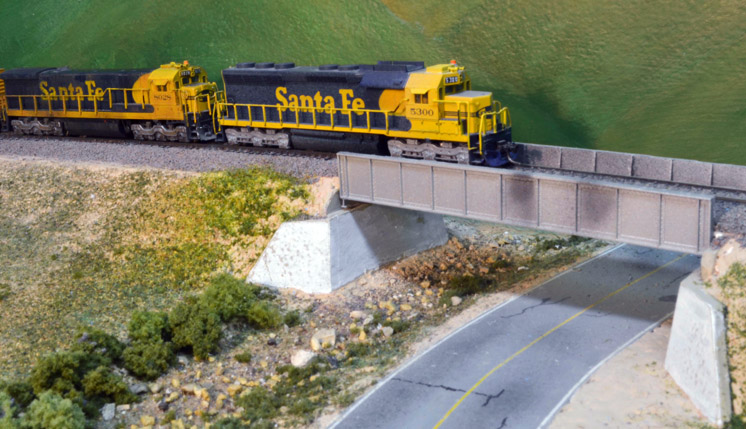
Just as we modelers do, prototype railroads can buy girder bridges ready-to-install or as kits. Sometimes a railroad will order a new plate girder bridge fully assembled and swap it out with the old in less than a day. In fact, a new bridge positioned near an older one, with the crane and other equipment poised and ready to install it, would make an interesting scene. This would be a good way to enjoy one of those gorgeous N scale Micro Engineering bridges while avoiding the difficulty of replacing an existing bridge that works perfectly well.
My prototype, the Southern Pacific line from Bakersfield to Mojave, Calif., used plate girder bridges almost exclusively. I have four on my N scale layout, one of which is shown above.
For girder bridges you have your choice between two basic types, open deck and ballasted deck. On open-deck bridges the support structure is open to view, making it the more visually interesting of the two. Ballasted-deck bridges have what amounts to a tray on top of this structure, into which is poured the ballast that supports the track.
On the prototype railroads, the ballasted type holds the edge in reliability and ease of maintenance. Track on these bridges can be dealt with in the same way as ordinary, on-the-ground track. There’s no finicky readjusting the rail height at the bridge’s ends.
The choice of which type of bridge to use on my N scale layout was made for me by the Southern Pacific – the ballasted deck. (One advantage of following a prototype is that you don’t lay awake nights trying to make these weighty decisions.)
Quite a few N scale through girder bridge kits are available. You can build them stock or regard them as parts for building bridges to suit. I’ve modified all my bridges to make them look more like their prototypes.
For my money, the most realistic and detailed N scale bridge kits are those by Micro Engineering. They offer girders separately, and I’ve used lots of those.
The N scale through-girder bridge you’ll see most often in hobby shops is the Atlas no. 2548. This particular model has been around since the 1960s. The bridge is 5″ long, so it can be swapped out directly with a standard-length piece of Atlas sectional track.
The outside faces of the girders on these Atlas code 80 bridges are nicely detailed, but the inside surfaces are plain. They are relatively inexpensive (about $7 the last time I checked) and it’s easy to cut the girders away from the bridge bottom and use them anywhere you need plain girders. (This model is not to be confused with Atlas’ newer code 55 plate girder bridge, which is exquisitely detailed.)
When I first started at Model Railroader magazine in 1977, Gordon Odegard and Bob Hayden were finishing the Clinchfield RR, destined to become a landmark in the history of N scale. Gordy was the very embodiment of creativity, and I learned so much just looking over his shoulder. (I can in fact brag that I had a hand in building the Clinchfield. Near the end, Gordy and Bob let me glue some lichen on a hill.)
But back to bridges. Gordy made down-and-dirty through-girder bridges for the Clinchfield layout by simply gluing Atlas girders to the sides of the plywood subroadbed.
The sides of the girders came out only slightly higher then the rail tops, but that’s how it should be. The floor that comes on the Atlas bridge is unrealistic. By the time you allow for a realistic frame, the ballast pan, and a foot or more of ballast, the track level in a real bridge is well up to the top half.
When I adapt these Atlas bridges, I glue panels of .080″ sheet styrene to the floors to raise the track high enough. I then install cork roadbed right on across the bridge.
The sides of steel girder bridges must be straight, so to support track on a curve, the girders on the inside must be shorter than those on the outside of the curve. To make these, I cut off the ends with a razor saw and use strip styrene to make a new end.
I don’t worry about the bottom of the bridge. In every instance on my layout, bottom detailing wouldn’t be worth the effort. Anyone with a head larger than a ping-pong ball will never see it.






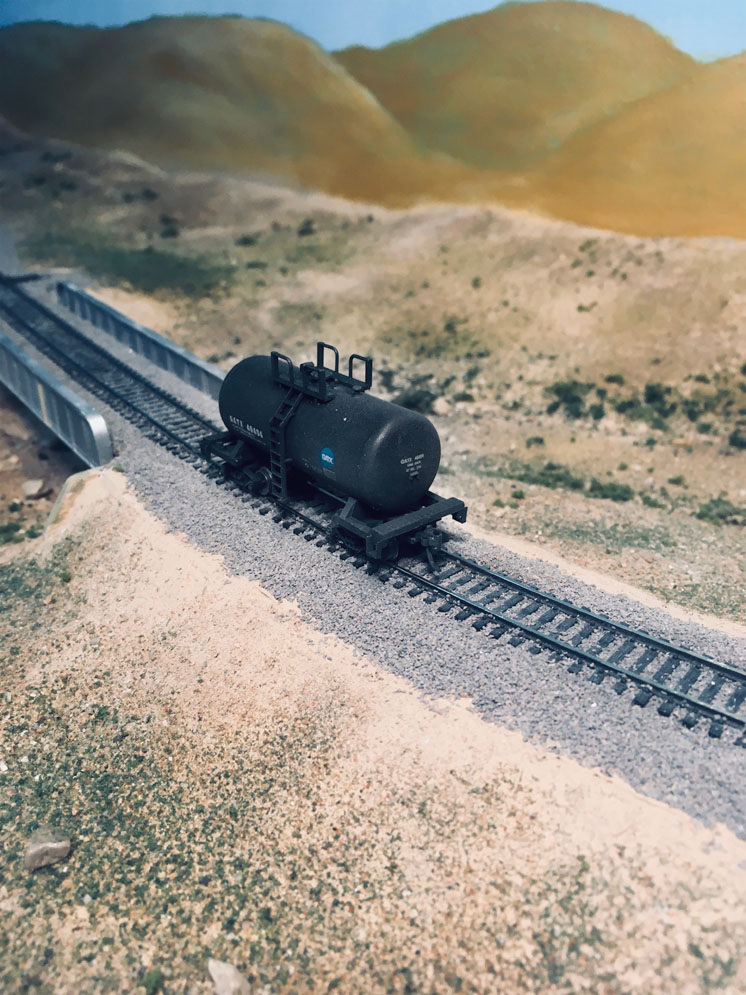
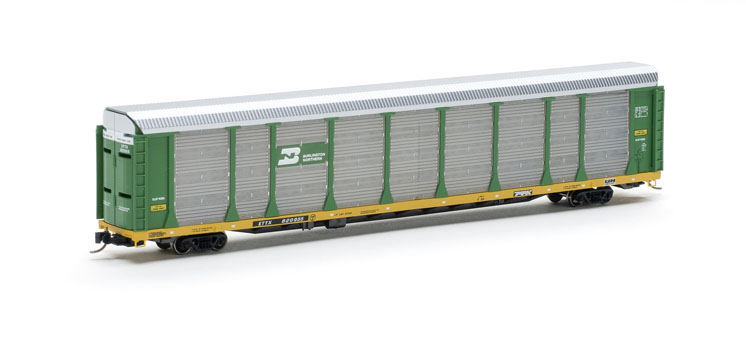
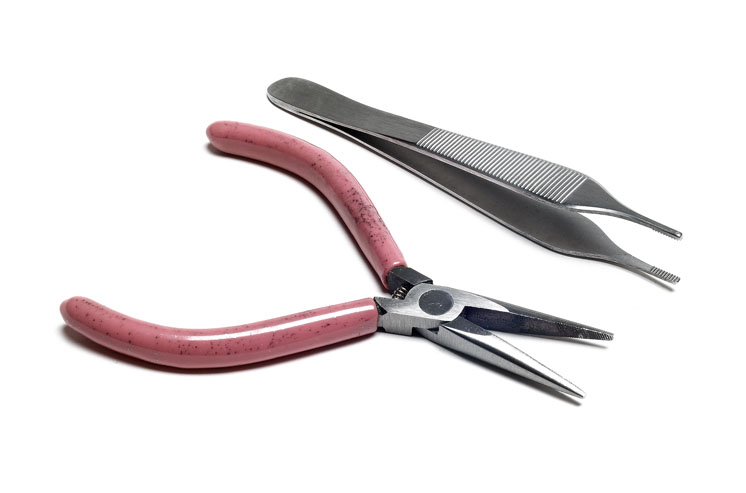
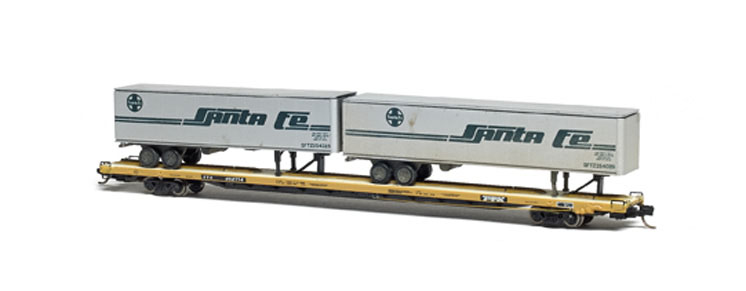




I was looking for the issue with the article on scratchbuilding the curved RR. bridge used to cross the new harbor area on the MR&T IN Milwaukie…where is it??? —Thanks!–Jonathan
Jim touches on something that I've never seen discussed when building curved bridges – "The sides of steel girder bridges must be straight, so to support track on a curve, the girders on the inside must be shorter than those on the outside of the curve." I've read several articles in MR about bridge building and no one ever mentioned that. I don't recall the exact issue it appeared in (maybe 20 or more years ago), but there was an article about a open deck curved bridge on a trestle. That simple fact was completely missed…